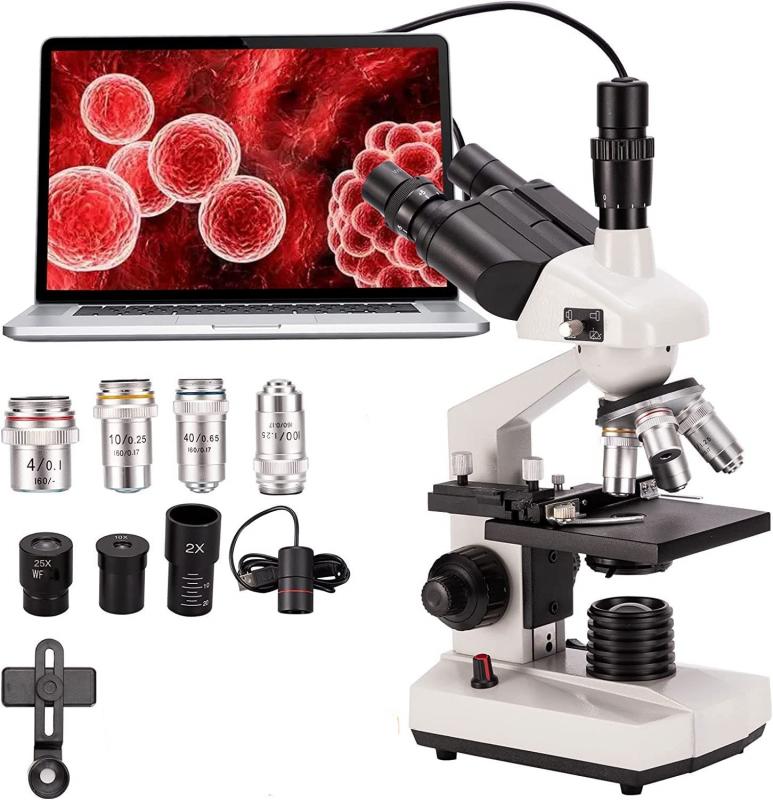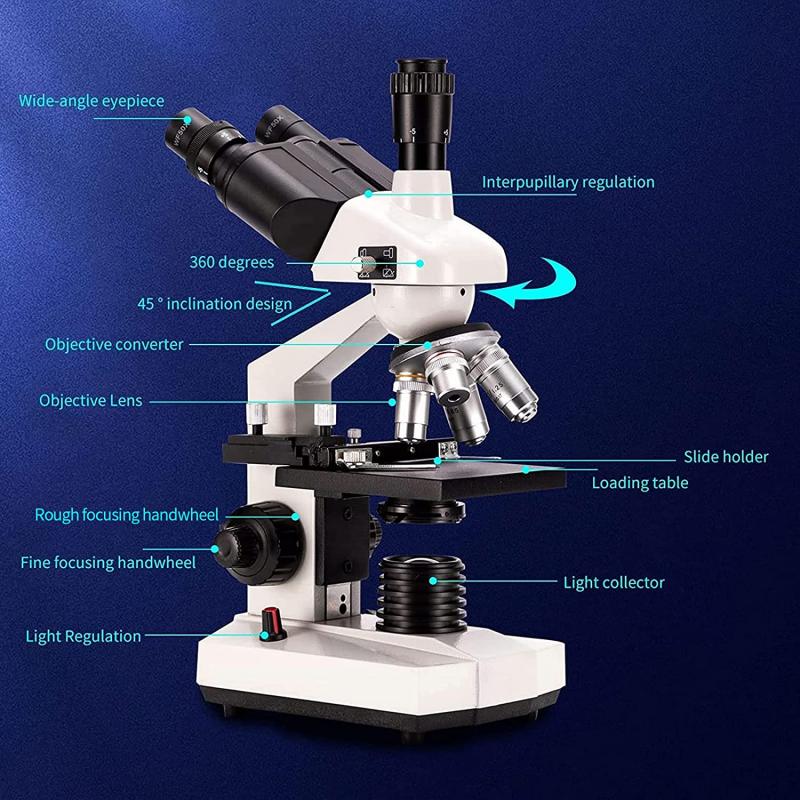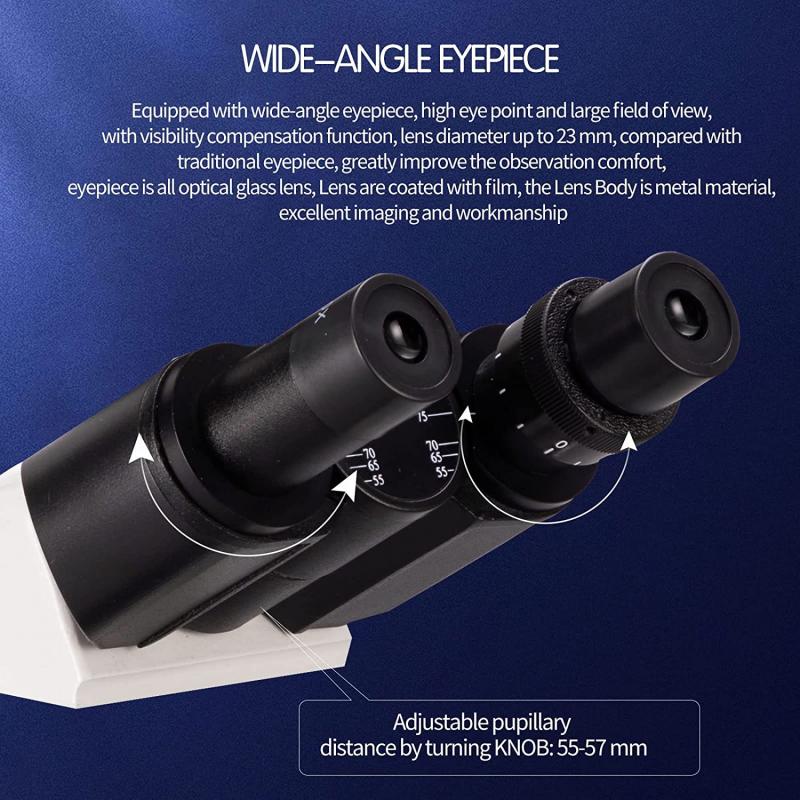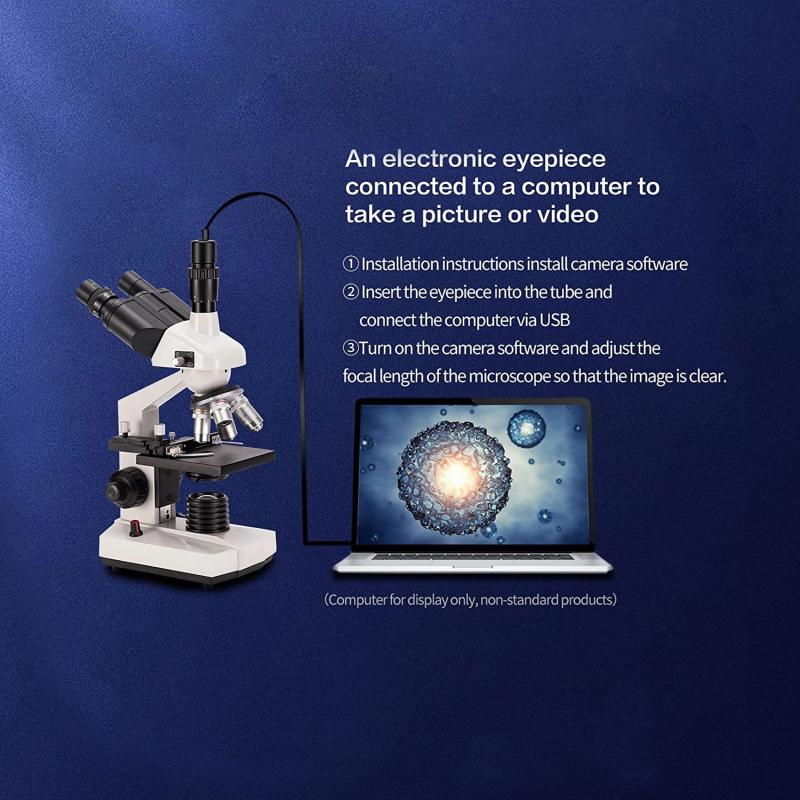What Is Electron Microscope ?
An electron microscope is a type of microscope that uses a beam of electrons instead of light to magnify and visualize objects. It has a much higher resolution and magnification power compared to traditional light microscopes. The electron beam is focused onto the specimen, and the interaction between the electrons and the specimen produces various signals that are detected and used to create an image. Electron microscopes are capable of revealing fine details of the specimen's structure at the nanoscale level. They are widely used in scientific research, particularly in fields such as biology, materials science, and nanotechnology, where high-resolution imaging is crucial.
1、 Principle of Electron Microscopy
The electron microscope is a powerful scientific instrument that uses a beam of accelerated electrons to magnify and visualize objects at a much higher resolution than traditional light microscopes. It was first developed in the 1930s and has since become an indispensable tool in various scientific fields, including biology, materials science, and nanotechnology.
The principle of electron microscopy is based on the interaction between electrons and the specimen being observed. A beam of electrons is generated by an electron gun and focused onto the specimen using electromagnetic lenses. As the electrons interact with the specimen, they undergo various interactions, such as scattering and absorption, which are then detected and used to create an image.
Compared to light microscopy, electron microscopy offers several advantages. Firstly, the wavelength of electrons is much shorter than that of light, allowing for much higher resolution imaging. This enables scientists to visualize objects at the nanoscale level, revealing fine details that would otherwise be impossible to see. Additionally, electron microscopy can provide information about the composition and structure of the specimen through techniques such as energy-dispersive X-ray spectroscopy and electron diffraction.
In recent years, advancements in electron microscopy have further expanded its capabilities. For example, the development of aberration-corrected electron microscopy has significantly improved the resolution and image quality. Furthermore, the integration of electron microscopy with other techniques, such as scanning probe microscopy and spectroscopy, has enabled researchers to study materials and biological samples in unprecedented detail.
Overall, the electron microscope has revolutionized our understanding of the microscopic world and continues to be a vital tool for scientific research. Its ability to provide high-resolution imaging and detailed structural information has opened up new avenues of exploration and discovery in various scientific disciplines.

2、 Types of Electron Microscopes
An electron microscope is a powerful scientific instrument that uses a beam of accelerated electrons to magnify and visualize objects at a much higher resolution than traditional light microscopes. It allows scientists to study the fine details of a wide range of materials, from biological samples to nanoscale structures.
There are several types of electron microscopes, each with its own unique capabilities and applications. The most common types include transmission electron microscopes (TEM), scanning electron microscopes (SEM), and scanning transmission electron microscopes (STEM).
TEMs work by passing a beam of electrons through a thin sample, which allows for the visualization of internal structures and the measurement of their dimensions. They are widely used in fields such as materials science, biology, and nanotechnology.
SEMs, on the other hand, scan a focused beam of electrons across the surface of a sample to create a detailed image. This technique provides information about the sample's topography, composition, and even elemental mapping. SEMs are commonly used in fields like materials science, geology, and forensic science.
STEMs combine the capabilities of both TEMs and SEMs, allowing for high-resolution imaging of both the internal and surface structures of a sample. They are particularly useful for studying nanoscale materials and devices.
In recent years, there have been advancements in electron microscopy techniques, such as the development of aberration-corrected electron microscopes. These instruments can achieve even higher resolution and improved imaging capabilities, enabling scientists to study materials at the atomic scale.
Overall, electron microscopes have revolutionized our understanding of the microscopic world and continue to be indispensable tools in various scientific disciplines.

3、 Electron Microscope Components
An electron microscope is a powerful scientific instrument that uses a beam of accelerated electrons to magnify and visualize objects at a much higher resolution than traditional light microscopes. It is widely used in various scientific fields, including biology, materials science, and nanotechnology.
The main components of an electron microscope include an electron source, electromagnetic lenses, a specimen chamber, and a detector. The electron source, typically a heated filament or a field emission gun, emits a beam of electrons. Electromagnetic lenses then focus and control the path of the electron beam, allowing for precise imaging and manipulation of the specimen.
The specimen chamber holds the sample being observed and provides a controlled environment for imaging. It is often equipped with various stages and holders to allow for sample manipulation and positioning. The detector captures the electrons that interact with the specimen and converts them into an image, which can be viewed and analyzed on a computer screen.
In recent years, there have been advancements in electron microscope technology, leading to improved resolution and imaging capabilities. For example, aberration correction techniques have been developed to minimize distortions in the electron beam, resulting in sharper and more detailed images. Additionally, the development of scanning transmission electron microscopy (STEM) allows for simultaneous imaging and chemical analysis of samples at atomic resolution.
Overall, electron microscopes have revolutionized our understanding of the microscopic world by providing unprecedented levels of detail and resolution. They continue to be essential tools in scientific research and have contributed to numerous discoveries and advancements in various fields.

4、 Electron Beam Interaction with Specimens
An electron microscope is a powerful scientific instrument that uses a beam of accelerated electrons to magnify and visualize specimens at a much higher resolution than traditional light microscopes. It operates on the principle of electron beam interaction with specimens, allowing scientists to study the fine details of a wide range of materials, from biological samples to nanoscale structures.
The electron beam in an electron microscope is generated by an electron gun and focused onto the specimen using electromagnetic lenses. As the beam interacts with the specimen, various signals are produced, including secondary electrons, backscattered electrons, and characteristic X-rays. These signals are then detected and used to create an image of the specimen.
Compared to light microscopes, electron microscopes offer several advantages. Firstly, they have a much higher resolution, allowing scientists to observe structures as small as a few nanometers. Secondly, electron microscopes can provide detailed information about the composition and chemical properties of the specimen through techniques such as energy-dispersive X-ray spectroscopy. Lastly, electron microscopes can operate in a vacuum, which eliminates the need for staining or fixing samples, making them suitable for studying delicate biological specimens.
In recent years, advancements in electron microscopy have further expanded its capabilities. For example, the development of aberration correction techniques has significantly improved the resolution and image quality. Additionally, the integration of electron microscopy with other techniques, such as scanning probe microscopy and spectroscopy, has enabled simultaneous imaging and analysis of specimens at different length scales.
Overall, electron microscopes have revolutionized our understanding of the microscopic world, allowing scientists to explore and visualize the intricate details of various materials and biological structures. With ongoing advancements, electron microscopy continues to play a crucial role in numerous scientific disciplines, from materials science to biology and beyond.





































